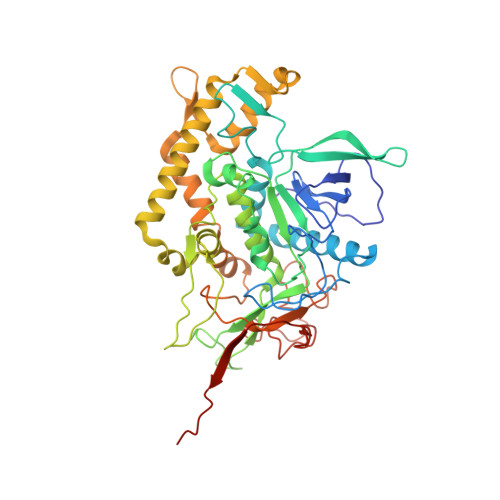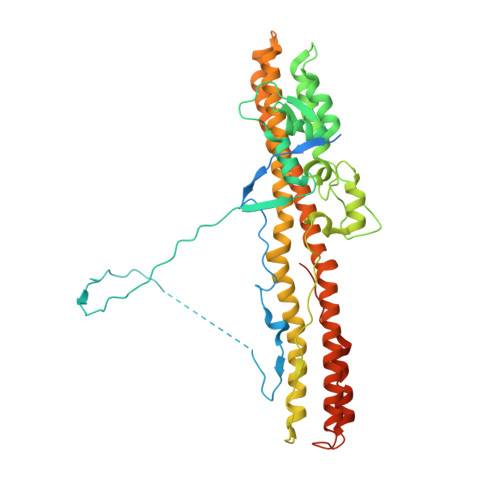Structural analysis of Clostridium botulinum neurotoxin type D as a platform for the development of targeted secretion inhibitors.
Masuyer, G., Davies, J.R., Moore, K., Chaddock, J.A., Ravi Acharya, K.(2015) Sci Rep 5: 13397-13397
- PubMed: 26324071
- DOI: https://doi.org/10.1038/srep13397
- Primary Citation of Related Structures:
5BQM, 5BQN - PubMed Abstract:
The botulinum neurotoxin type D is one of seven highly potent toxins produced by Clostridium botulinum which inhibit neurotransmission at cholinergic nerve terminals. A functional fragment derived from the toxin, LHn, consisting of the catalytic and translocation domains, has been heralded as a platform for the development of targeted secretion inhibitors. These secretion inhibitors are aimed at retargeting the toxin towards a specific cell type to inhibit vesicular secretion. Here we report crystal structures of LHn from serotype D at 2.3 Å, and that of SXN101959 at 3.1 Å resolution. SXN101959, a derivative that combines LHn from serotype D with a fragment of the growth hormone releasing hormone, has previously revealed promising results in inhibiting growth hormone release in pituitary somatotrophs. These structures offer for the first time insights into the translocation domain interaction with the catalytic domain in serotype D. Furthermore, structural information from small-angle X-ray scattering of LHn/D is compared among serotypes A, B, and D. Taken together, these results demonstrate the robustness of the 'LHn fold' across serotypes and its use in engineering additional polypeptide components with added functionality. Our study demonstrates the suitability of botulinum neurotoxin, and serotype D in particular, as a basis for engineering novel secretion inhibitors.
- Department of Biology and Biochemistry, University of Bath, Claverton Down, Bath BA2 7AY, UK.
Organizational Affiliation:


















